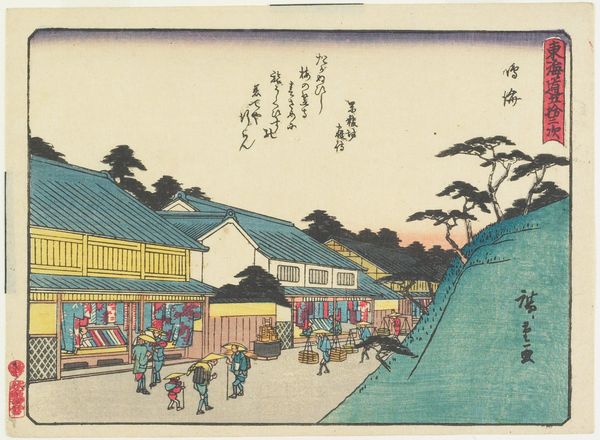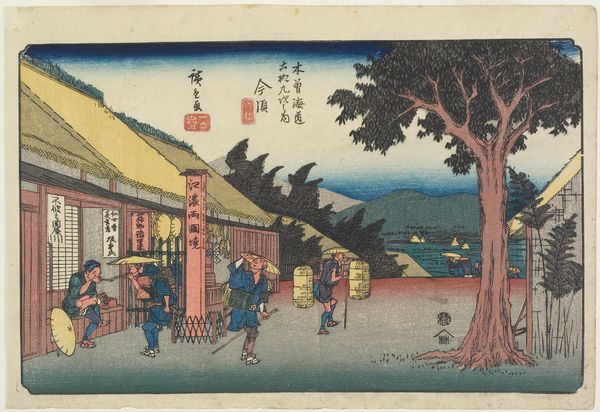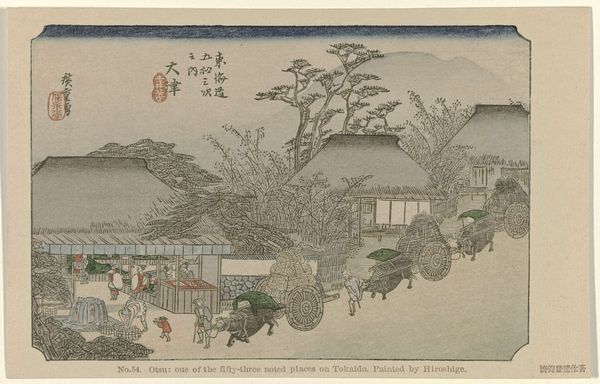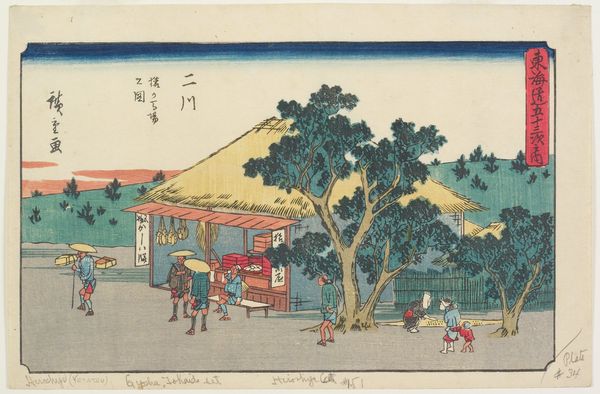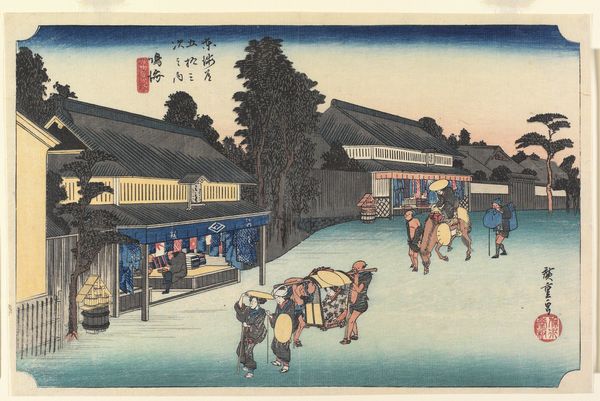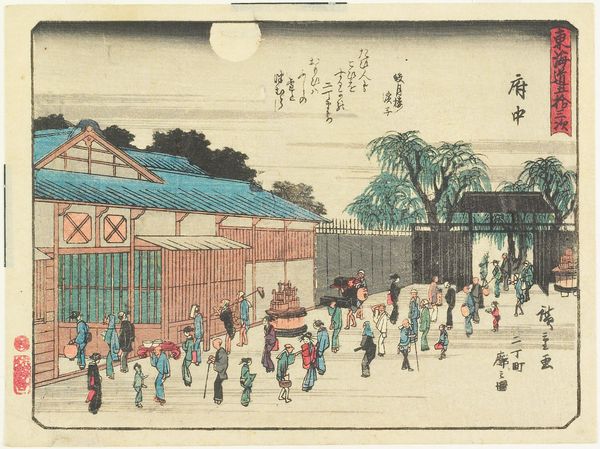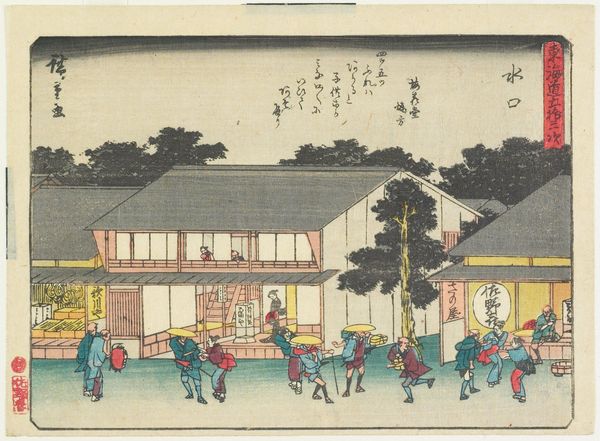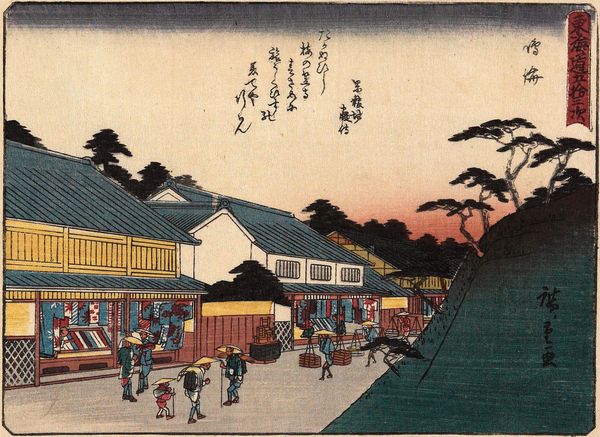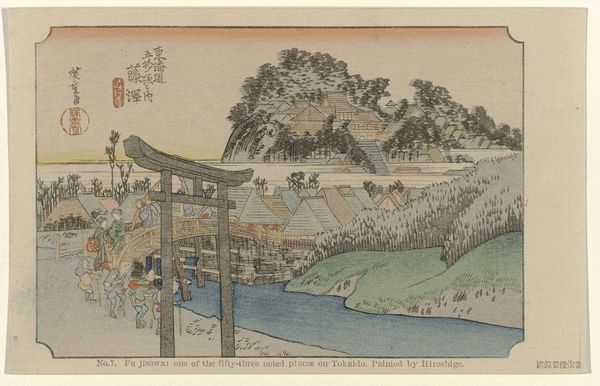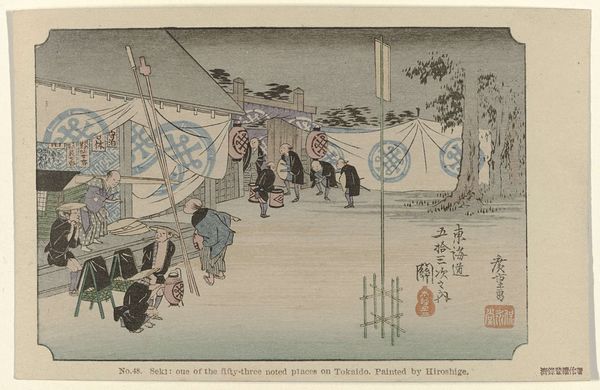
Dimensions: height 90 mm, width 141 mm
Copyright: Rijks Museum: Open Domain
Curator: Let’s talk about "Narumi," a woodblock print by Utagawa Hiroshige, created around 1906. It’s currently held here at the Rijksmuseum. Editor: The scene strikes me with its immediate sense of daily life and muted colors; despite that, the woodblock print yields an intriguing flatness that really accentuates the movement of the travelers within the town. Curator: Absolutely, that "flatness," as you call it, is characteristic of Ukiyo-e prints, which translates to "pictures of the floating world." These works weren't simply landscapes, but often commentaries on contemporary life, leisure, and also commerce, right? Notice how the workers and travelers intermingle. This intersection speaks to complex economic and social relationships of the time. Editor: The linear perspective here isn't Western—that much is very clear—but look at how he uses scale to suggest depth. It’s also interesting to note how the darker lines accentuate the edges of the roofs against that wonderfully nuanced gradation of sky, almost evoking a sort of gentle melancholia. Curator: That melancholic feeling also permeates the fact that these scenes became highly desirable in a time when feudal society and strict hierarchies began crumbling as more fluid movement happened along the Tokaido road. The road and sites along the way fostered a rise in merchant power and therefore also destabilized power dynamics between travelers from varied socio-economic classes, as well. Editor: A keen insight; it’s compelling to consider this piece not merely as a landscape but as an intersectional observation of economic fluctuations and even, dare I say, social upheaval. It reminds us that formal elements always gain significance when interwoven with broader cultural context. Curator: It does—it highlights that everything from print medium to depiction, scale to depth are choices weighted by historical narratives and lived experiences. Thank you for shedding a different perspective. Editor: The pleasure was mine. Hopefully this short conversation illuminated an interplay of historical context with an analysis of formal structures in "Narumi".
Comments
No comments
Be the first to comment and join the conversation on the ultimate creative platform.
